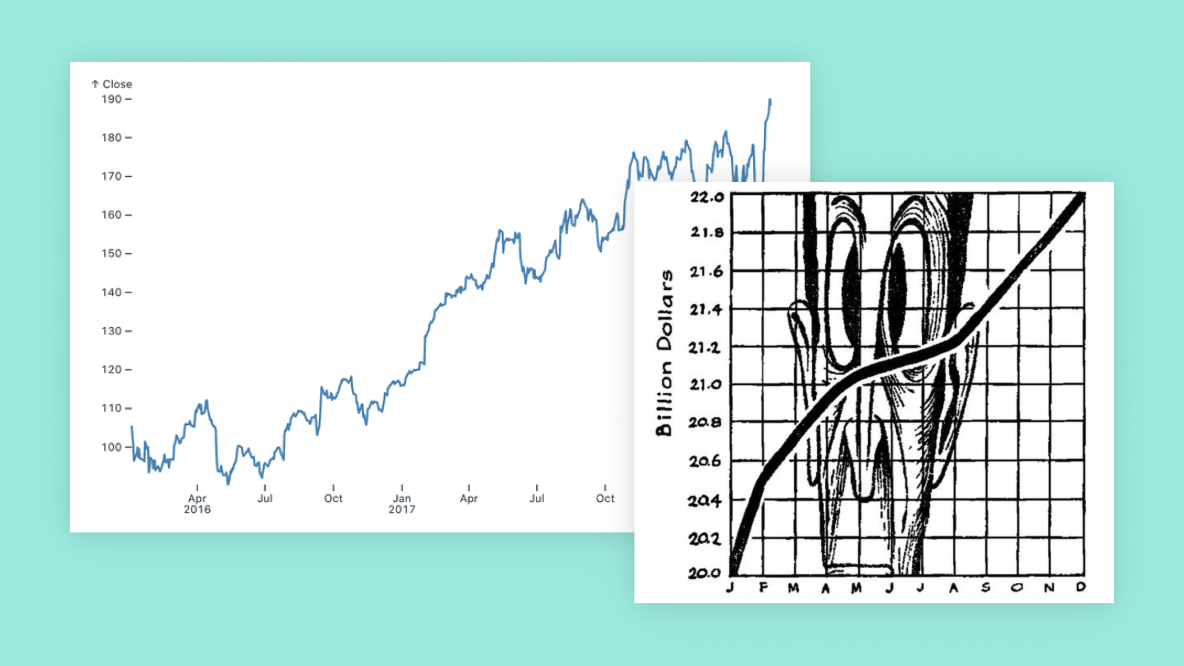
It’s never okay to crop the y-axis, except when it is
When creating a chart, one of the decisions you have to make is what range of values to show. A common visualization rule says that you’re supposed to start the vertical (Y) axis at 0, at least with bar charts. Check out this pair of example bar charts:
Both charts in this image show the same data about the number of medals by country in a past Olympic Games. The left chart, however, starts at zero, while the one on the right cuts off all numbers below 300.
It’s easy to see that the chart on the right exaggerates the difference between countries. The top-ranked U.S. has about twice as many medals as Spain (ESP) in tenth place, not 20 times as many as the chart on the right might have you believe.
The risk here is that people looking at this chart will miss that it’s cut off, misread the values, and potentially base an important decision on a misunderstanding. This isn’t just a theoretical problem, studies have shown that this is indeed something people reliably get wrong. We’ll talk about one such study below.
This has led to the general rule to never start a bar chart at a value other than zero. In fact, many visualization tools and charting libraries make it difficult or even impossible to create bar charts with a non-zero baseline.



















